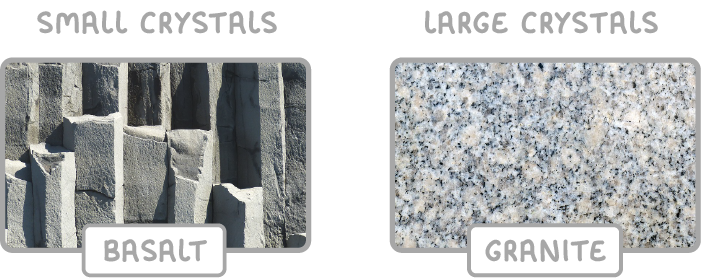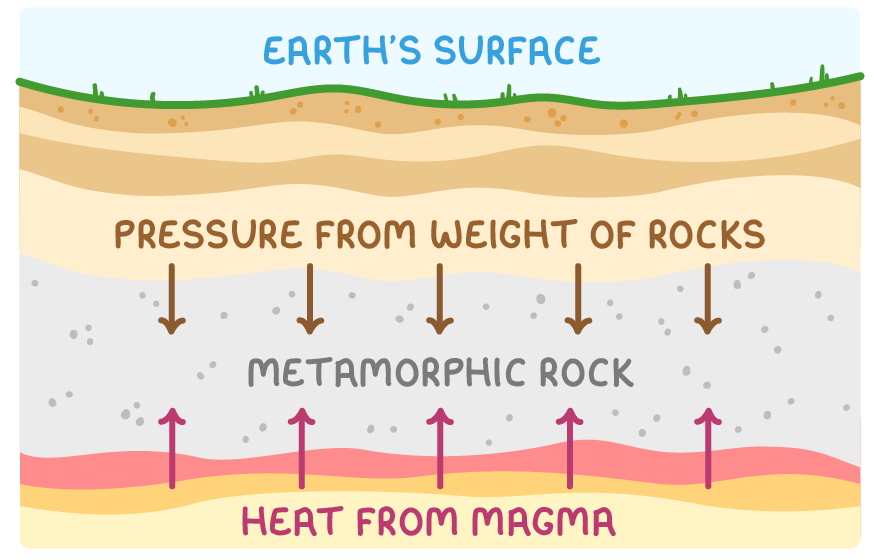Rock types
This lesson covers:
- The three main types of rocks
- How igneous, sedimentary and metamorphic rocks are formed
- How rocks are made up of minerals
There are three types of rocks

There are three main categories of rocks:
- Igneous rocks
- Sedimentary rocks
- Metamorphic rocks
Each rock type forms through different processes over various timescales.
Igneous rocks

Igneous rocks form from magma - molten rock underneath the Earth's surface.
As magma cools, it crystallises into interlocking mineral crystals.
- Magma is pushed up towards the surface and erupts from volcanoes as lava. This is extrusive igneous rock.
- Magma that solidifies underground forms intrusive igneous rock.
Igneous rocks can have different sizes of crystals

The size of the crystals in igneous rock depends on the cooling rate:
- Fast cooling above ground = small crystals.
- Slow cooling underground = large crystals.
Common igneous rocks include basalt (extrusive), and granite (intrusive).
Sedimentary rocks

Sedimentary rocks form in layers from fragments of other rocks and remains of dead organisms.
Over time:
- Water evaporates and the layers are compressed and cemented together by dissolved minerals.
- These layers build up over millions of years.
Fossils are often found in sedimentary rock. These fossils can help determine the relative age of the rock layers.
Common sedimentary rocks include limestone, chalk, and sandstone.
Metamorphic rocks

Metamorphic rocks form when existing rocks are changed by intense heat and pressure underground.
This causes the rocks to reform with:
- Tiny mineral crystals.
- Folded or wavy layers.
Common metamorphic rocks include marble, slate, and schist.
Rocks contain minerals

Rocks contain various minerals, which are made up of chemical elements and compounds:
- Elements - such as oxygen (O) and silicon (Si) form the compound silicon dioxide.
- Compounds - for example: silicon dioxide (SiO2) make up the mineral quartz.
- Minerals - such as quartz combine to make rock.
- Rocks - such as granite is composed of minerals including quartz.